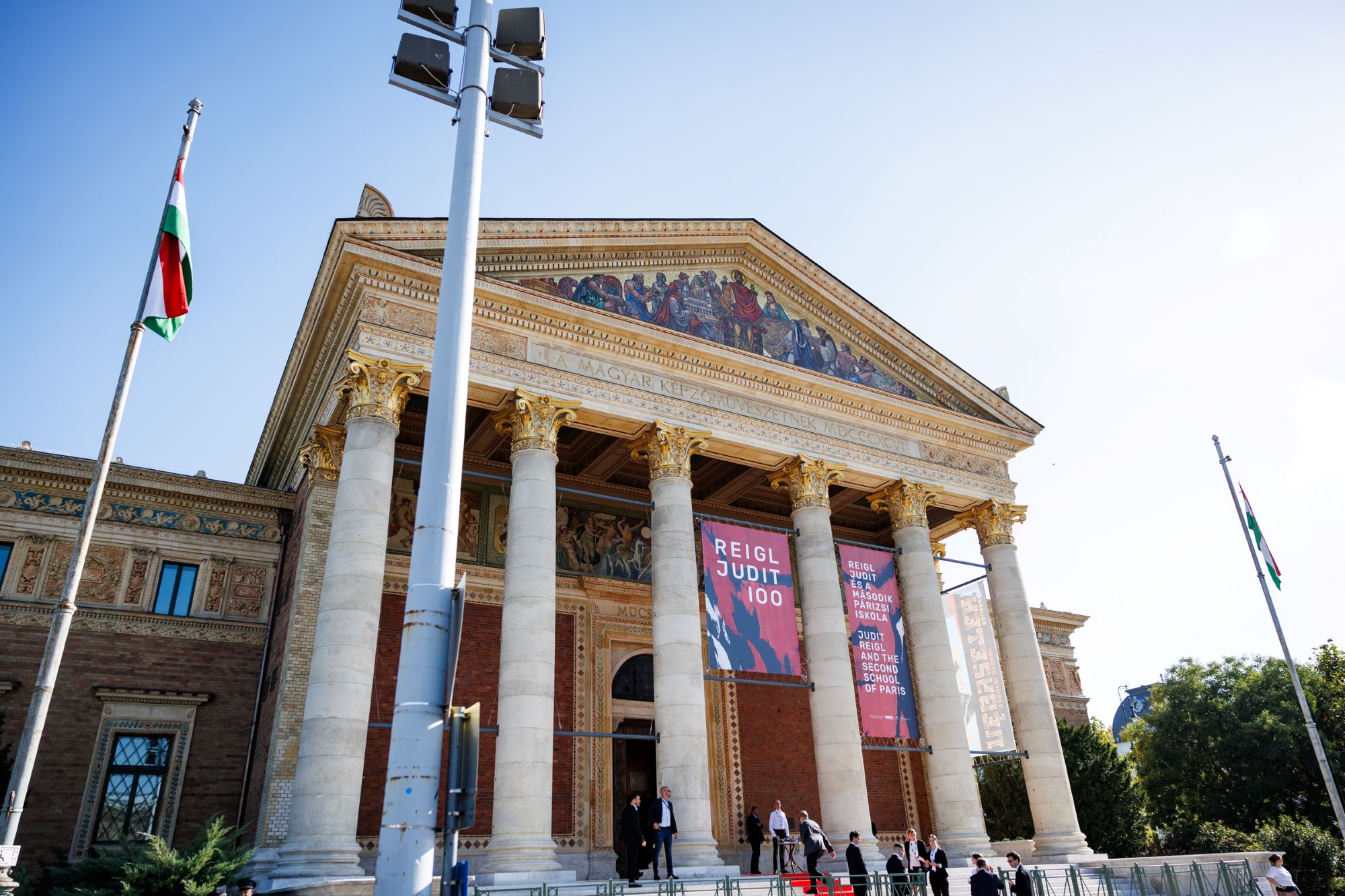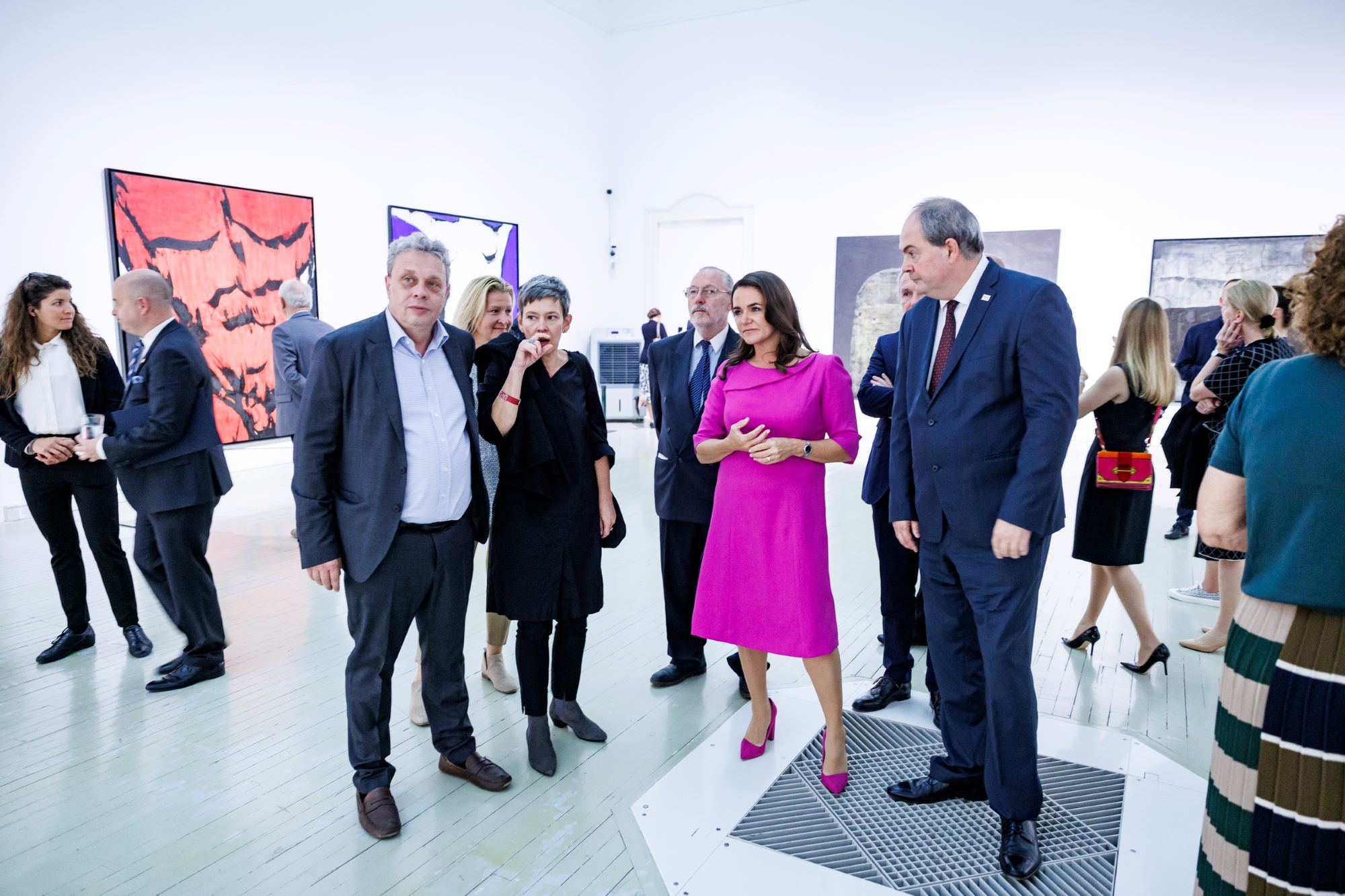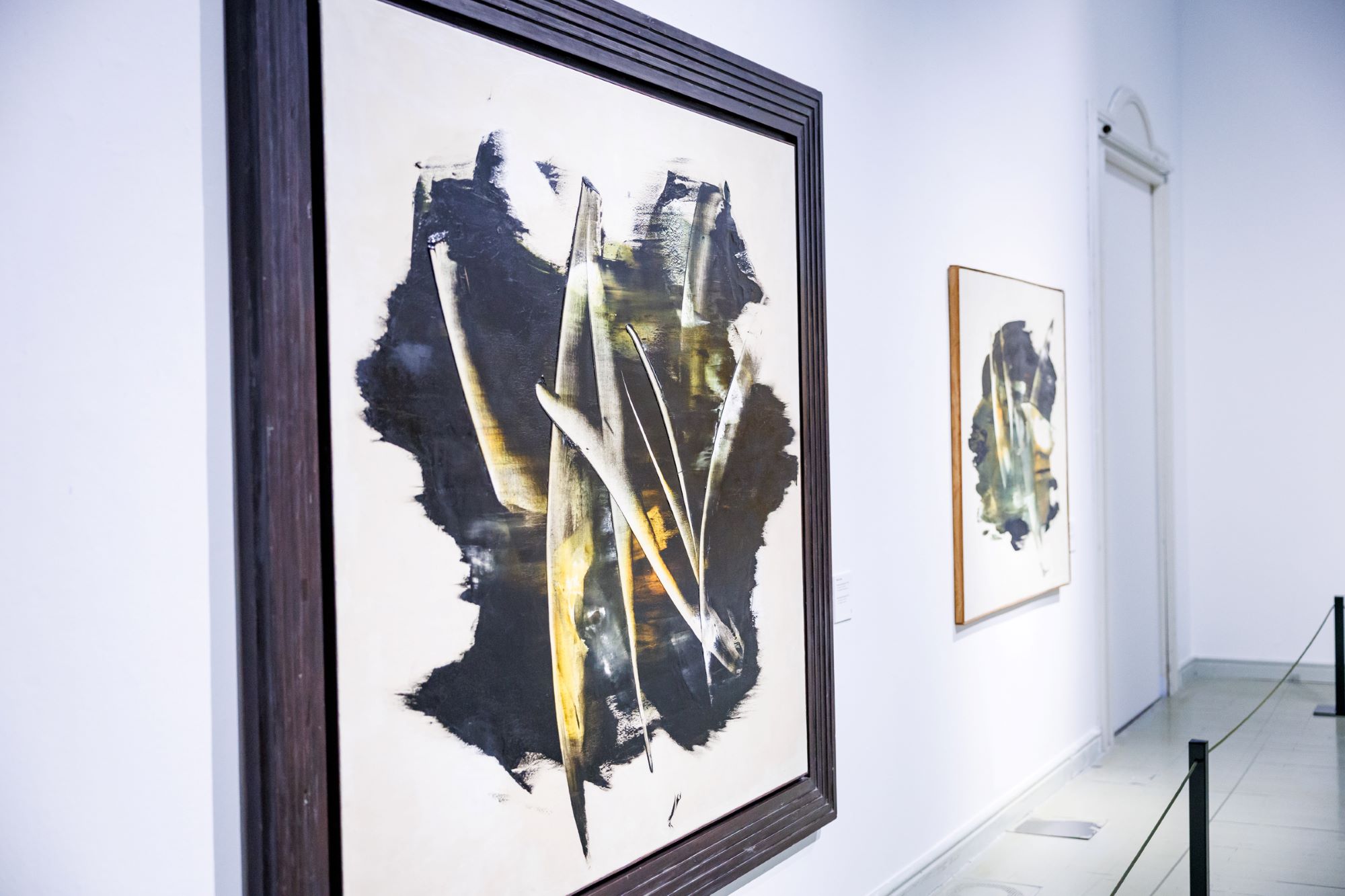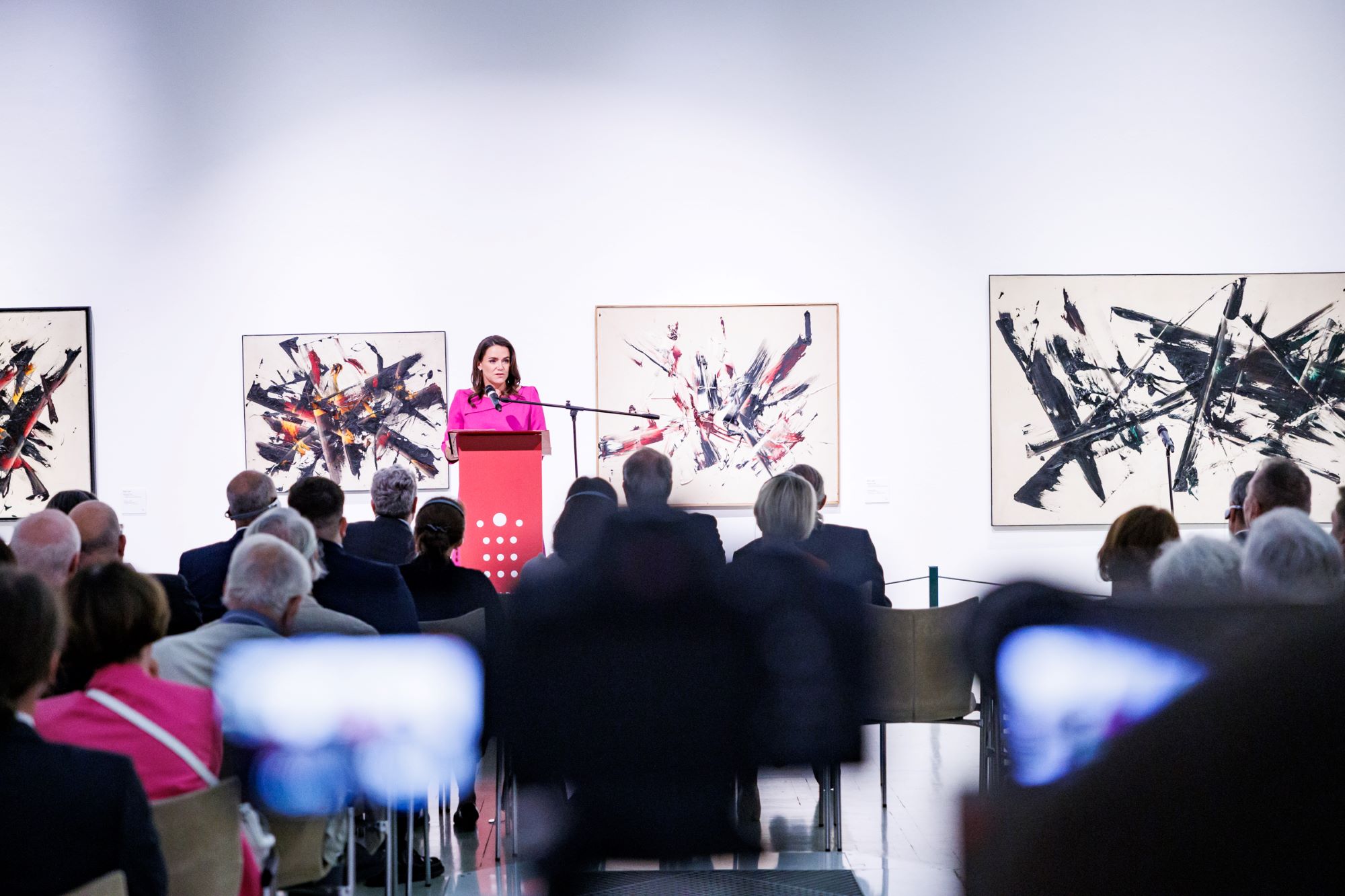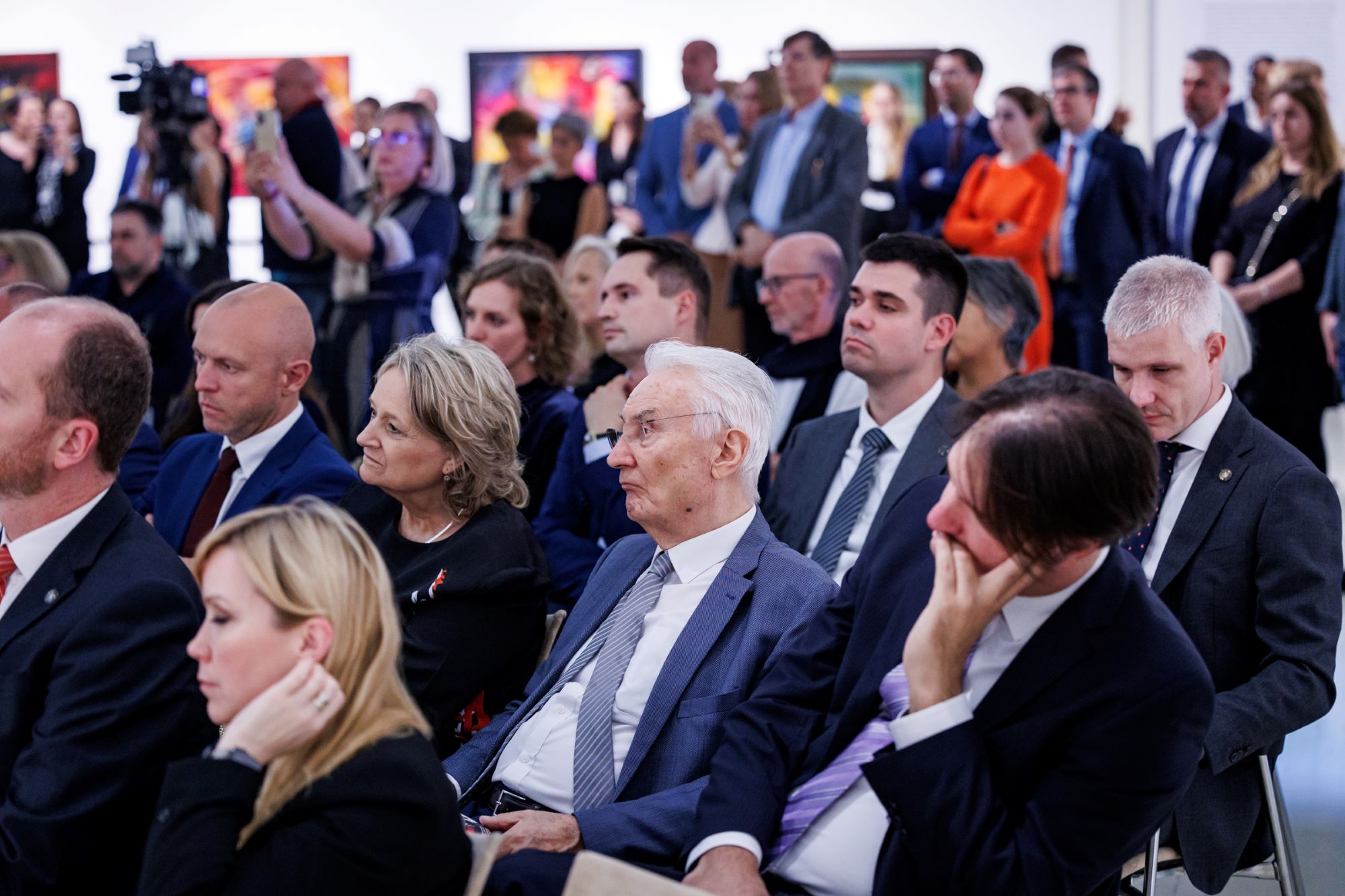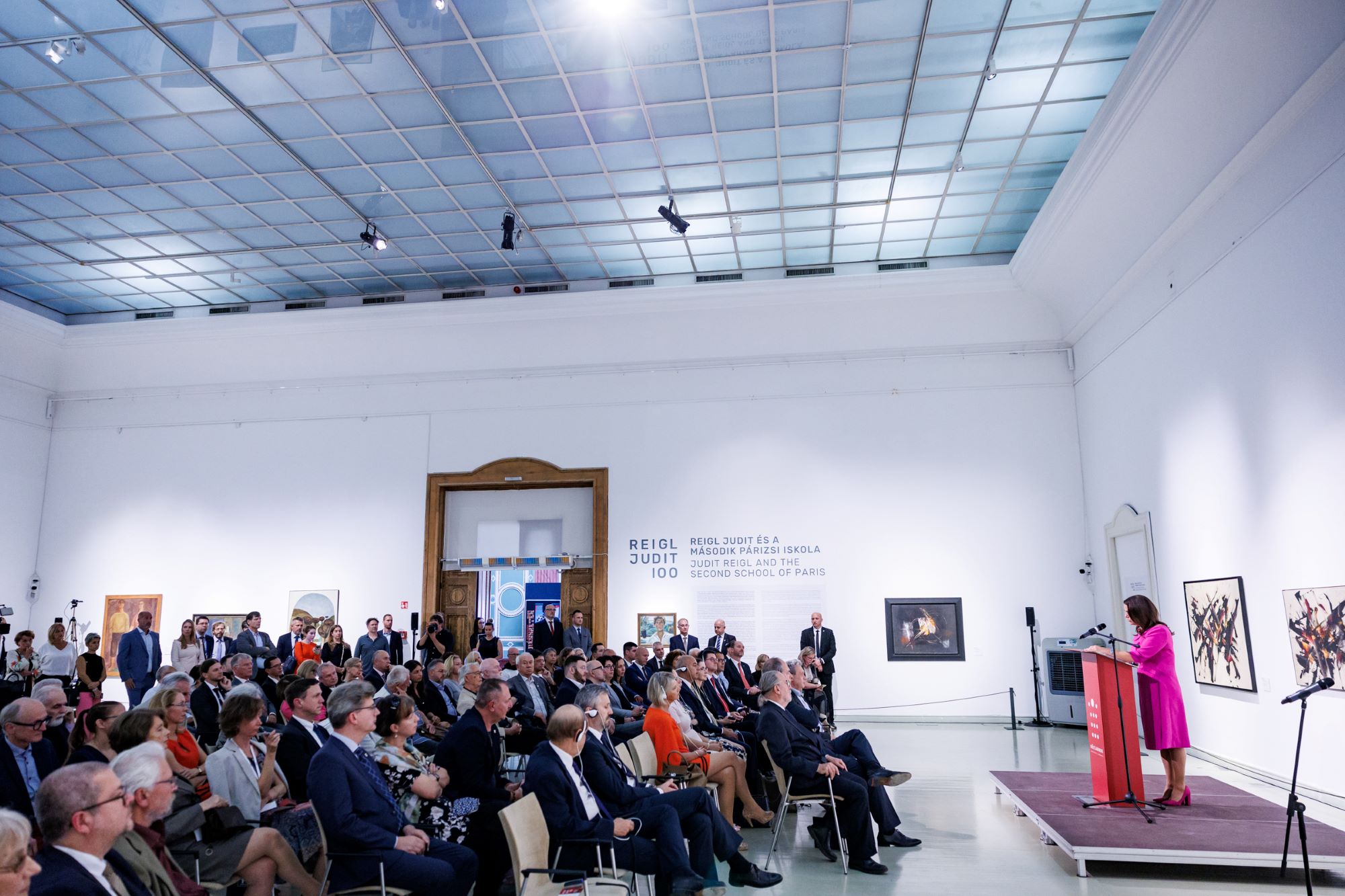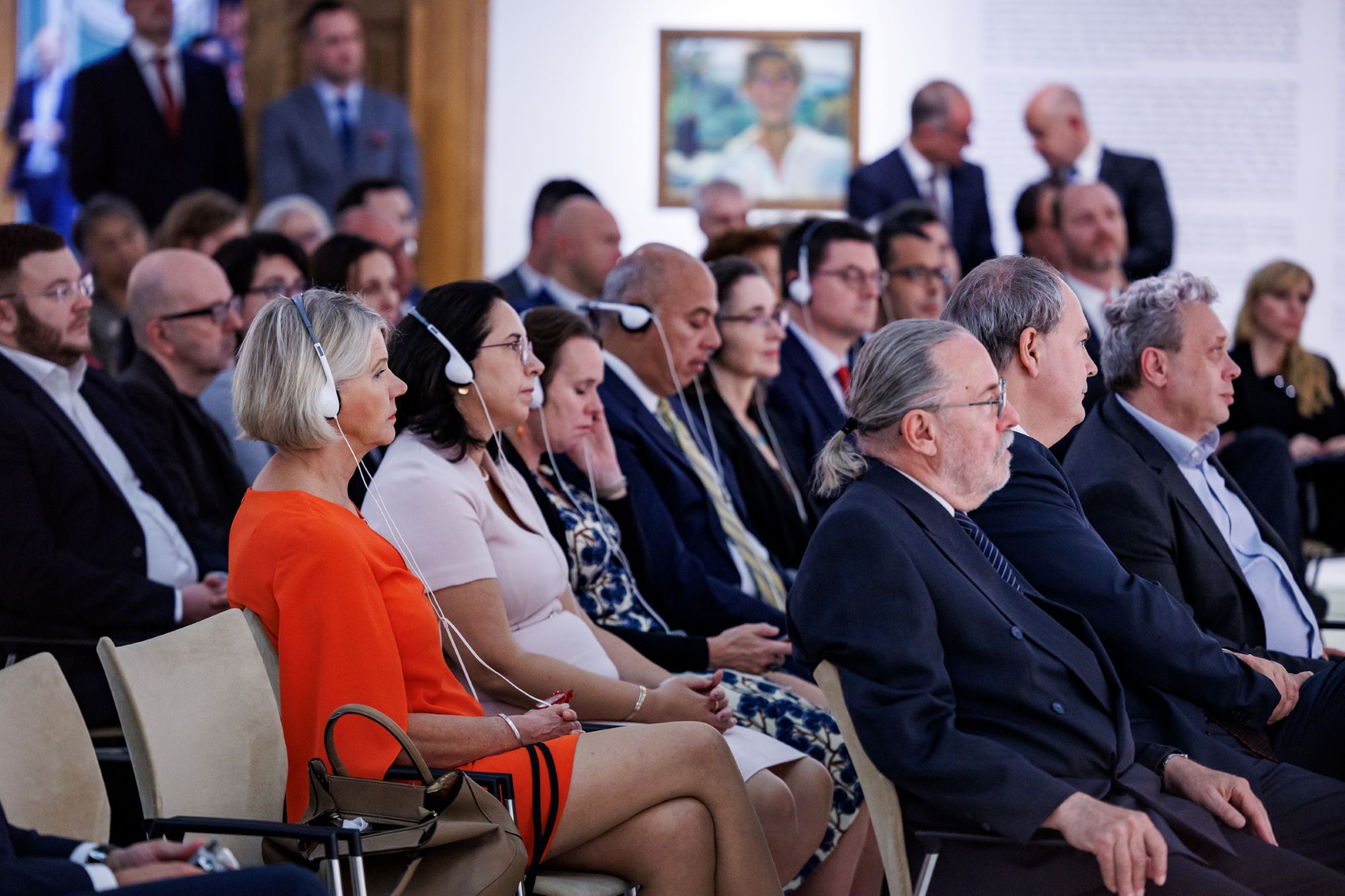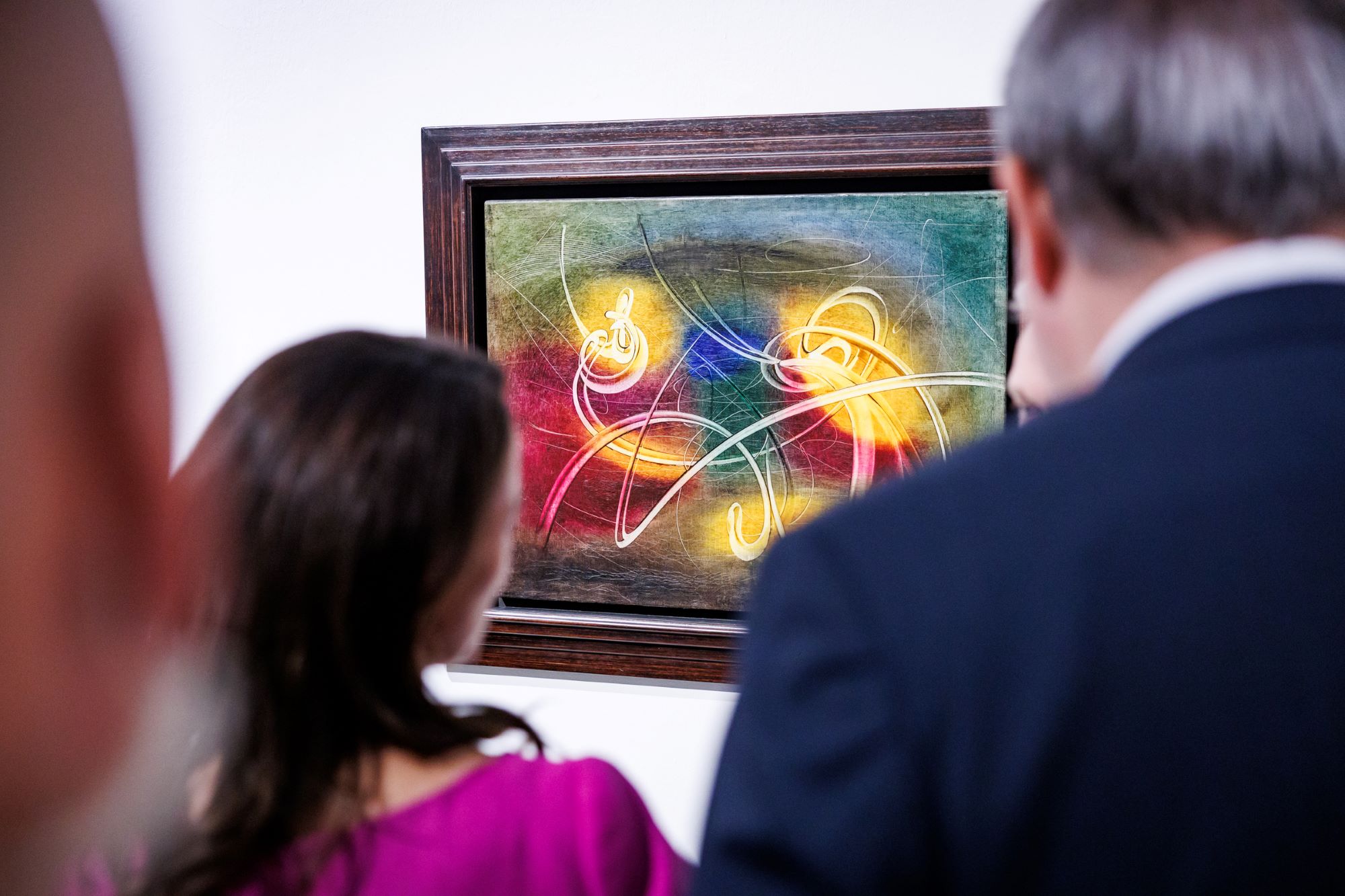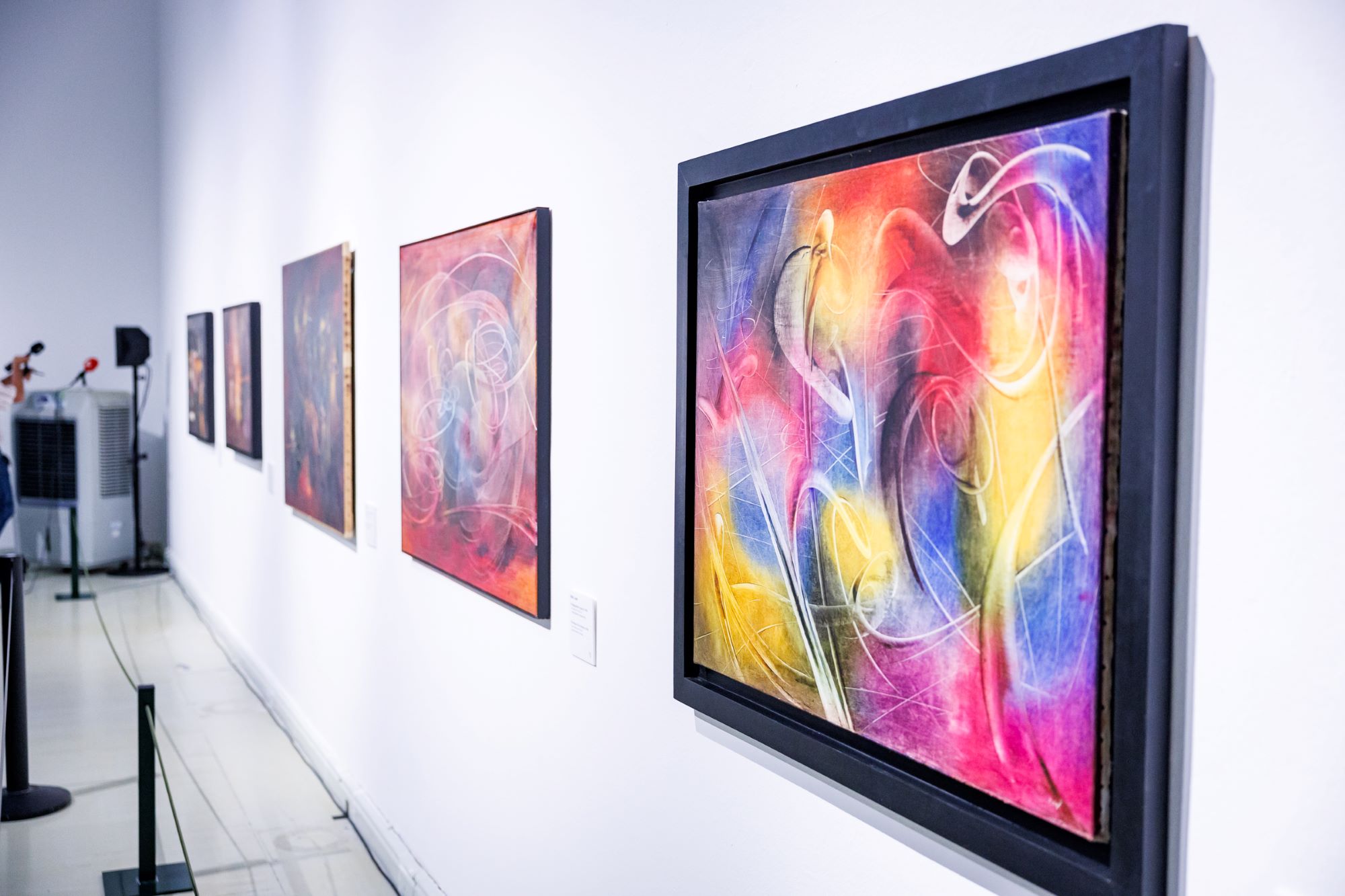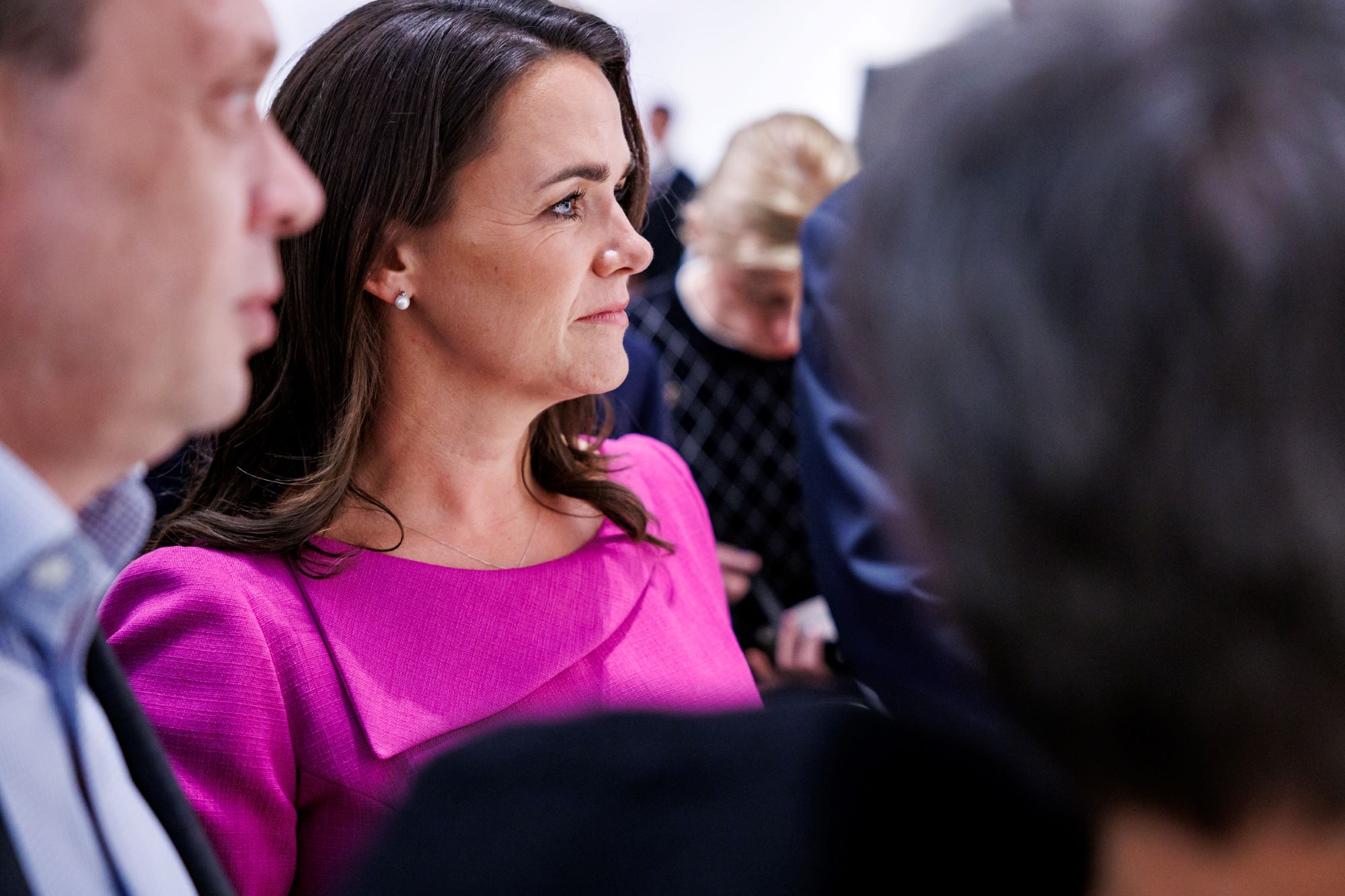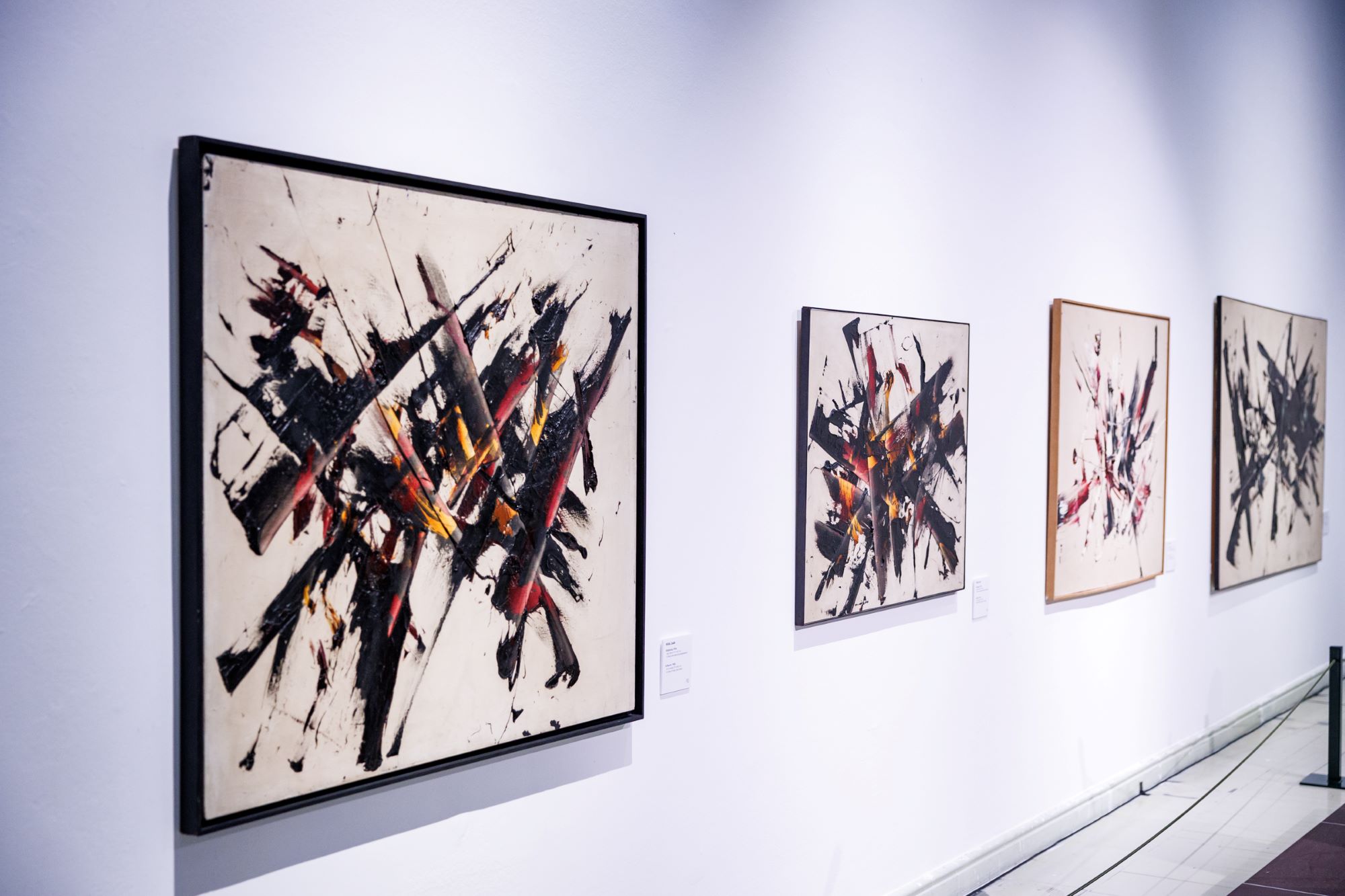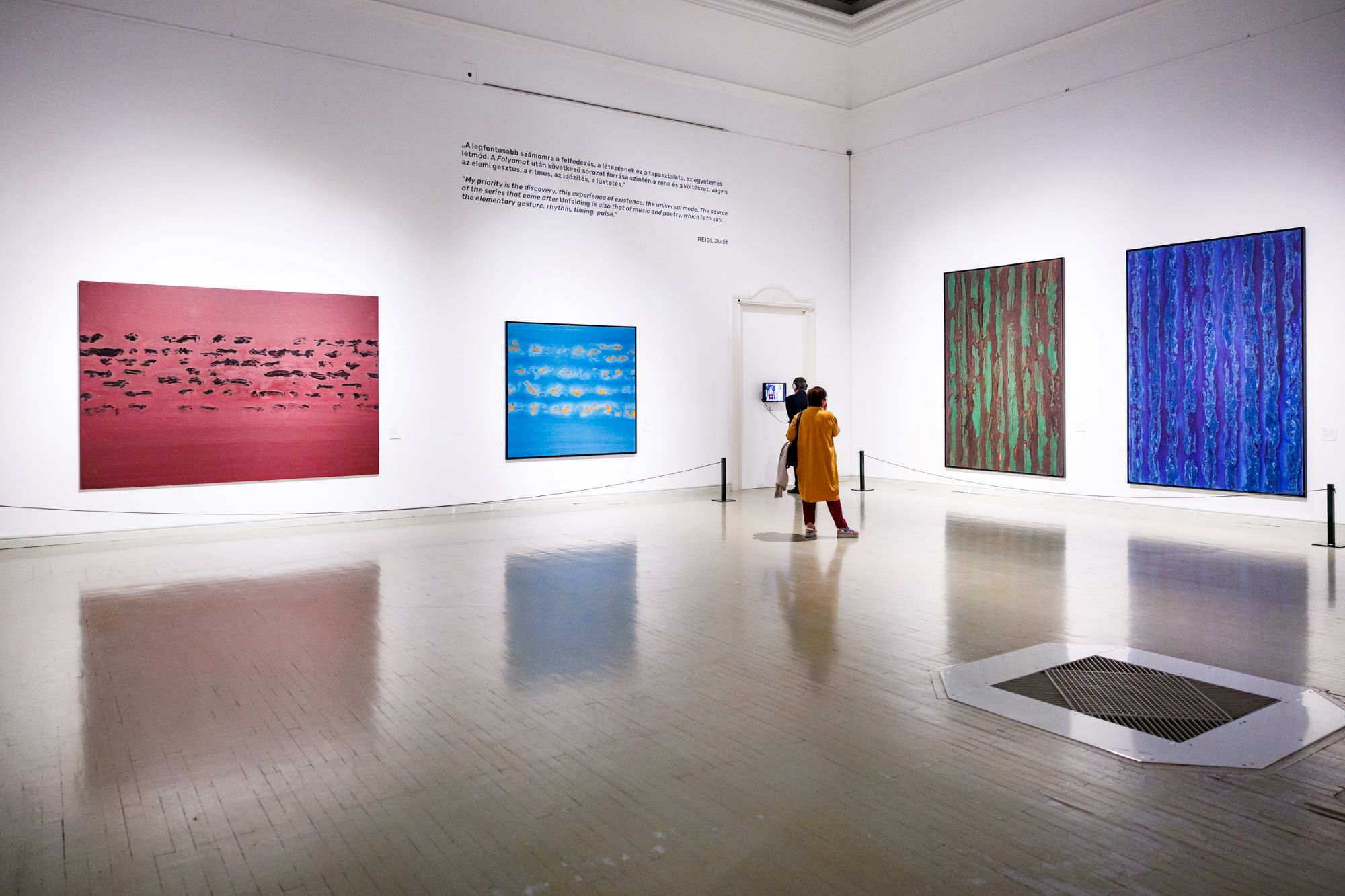"Because one can live in darkness, but creation requires light" – Speech by Katalin Novák at the opening of Judit Reigl's exhibition
I would like to recall a personal meeting from ten years ago. We visited Judit Reigl at her home in Marcoussis near Paris, with then-Minister Zoltán Balog. I was prepared to meet a celebrated artist who undoubtedly lived and created in an aristocratic environment, in luxurious circumstances, and who might condescendingly share something about her art with us. I couldn't have been more wrong. The home, which also served as Judit Reigl's studio, was converted from a tractor shed. She lived on the comfortably messy forty-square-meter’s lower level, creating on the attic. Her philosophy was clear: one can live in darkness, but creation requires light. Not only was her home modest, but Judit Reigl also welcomed us with a lack of pretence, inviting us in with an open heart. We engaged in lengthy discussions about art, philosophy, faith, perseverance, and life. Careful in my wording in the presence of those who know her much more intimately, during our encounter, the image that emerged in me was that of a strong, courageous, uncompromising woman. A constantly seeking artist, with a rich and fulfilling life journey. A life journey where every moment was filled with unrestricted creation, the expression of the ineffable, making the intangible visible. An artist who did not live in the past but was not confined to the present either. I had the impression that she was already beyond the present in thought, spirit, and intellectual freedom; for her, it had lost its appeal already. She not only constantly surpassed her time but also made it challenging for those around her to keep up.
Ladies and Gentlemen, Honourable Presidents!
These days are about Hungarian excellences, with a special focus on Hungarian female excellences. It's only Tuesday, but we can already welcome two new Hungarian Nobel laureates this week, including the first Hungarian woman to receive this recognition. On this occasion, and from here, we warmly congratulate Ferenc Krausz and Katalin Karikó on their outstanding achievements!
And today, we bow our heads in honour of a groundbreaking female artist who held freedom above all else. Judit Reigl sensed in the late 1940s that the Iron Curtain dividing Europe and the destructive, oppressive communist ideology would deprive her of what is indispensable for a creative person: physical freedom and the possibility of the full realization of intellectual freedom.
She didn't conform. When the communist regime, recognizing her talent, wished to exploit it for its own purposes, she resisted. For those of us who know this dark era only through stories: how often do we ponder what we would have done? Would we have been able to preserve our mental freedom? Would we have been able to say no to orders that come with payment and recognition in the pervasive atmosphere of fear and uncertainty, risking imprisonment, exile, or even our lives? Judit Reigl did not paint portraits of Mátyás Rákosi or Ernő Gerő. She declined the offered scholarship to Moscow.
She yearned for freedom. She left her motherland, relatives, mentors, and fellow artists. She did not succumb to the increasingly suffocating and oppressive atmosphere of the communist dictatorship. Meticulously, repeatedly, she planned the course of her defection, and, in the end, realizing the eighth plan, she crossed the border. She walked across Europe to reclaim her freedom, personal, artistic, and intellectual independence.
Because one can live in darkness, but creating requires light.
Ladies and Gentlemen!
Her chosen home became France, like for so many other Hungarians. The pursuit of Hungarian culture continued in Paris, despite the challenges of immigrant life. As a female artist, she faced difficulties in conflict-laden, ever-changing 20th-century Europe. Yet, with the tenacity of the female spirit, she fought for the freedom and autonomy of her artistic existence. In her regained freedom, she ultimately translated images inspired by oppression onto canvas, becoming the greatest Hungarian female abstract artist. She didn't seek worldwide fame, yet her paintings are now preserved in the world's largest and most important contemporary art collections, including the Museum of Modern Art (MoMA), the Metropolitan Museum in New York, the Tate Modern in London, and the Centre Pompidou in Paris.
Judit Reigl lived through much of her life in the 20th century, marked by wars and destructive ideologies. The periods of war, economic crises, and their aftermaths shaped her life and thinking.
War. How much the meaning of this word has changed in the past year and a half! What seemed like a distant event, either in time or space, has now become a looming reality. If there's anything "good" about war, it's the way it makes us recognise what is true value in our lives and our world, and what we stand to lose. Perhaps now we truly begin to appreciate living in freedom and peace.
Ladies and Gentlemen!
Judit Reigl also connects Hungary with France and Francophone culture. The histories of Hungary and France have intersected at various points throughout the centuries, marked by both glorious and painful moments. We have influenced each other intellectually and culturally.
Égalité, complementarité, solidarité.
In Judit Reigl's art, these shared values condense. In her paintings, Hungarian, French, and universal elements unite and dissolve into each other. She connects our cultures and elevates them together to a higher level.
Her art is our common heritage. The parallels between her "limitless world beyond space and boundary" and the Francophone world are easily recognizable. More than just the shared French language ties these geographically distant and culturally and religiously diverse countries together: the perpetual interest and curiosity towards each other, mutual acceptance and respect, and the sense of responsibility for one another.
For Hungarians, Paris has long symbolized Europe's cultural capital. Sándor Márai reflects on this:
"For centuries, the spirit of this nation has been the teacher of Europe, and its logic, sense of proportion, analytical ability, and formative talent have taught peoples and nations to feel, see, think, and create in a European manner..."
It's no coincidence that a series of Hungarian artists sought to come here to learn, create, and it's also no accident that notable representatives of French art regularly find a place in Hungarian museums. Following Cézanne and Matisse, the Budapest Museum of Fine Arts is now paying homage to one of the world's most famous impressionist painters, Renoir.
Judit Reigl was a significant harbinger of female painters in both France and Hungary. One can only express gratitude and encouragement for the work through which the Academy of Arts and the Palace of Art connect with the cultural elite of the Francophone world and under the auspices of renowned institutions, present our world-famous artists to the public.
Ladies and Gentlemen!
One can live in darkness, but creation requires light.
Judit Reigl's life was modest and disciplined. She never aimed for the summit, yet eventually, she reached it. As she expressed it: "My path is like a spiral. I always return to the same place, just one level higher." I wish for all of us to live our lives in this way. Not forgetting where we belong, not denying our identity, and moving ever closer to the purpose assigned to us. Judit Reigl's art, showcased in today's exhibition, helps us to do exactly that.
Thank you for listening!


